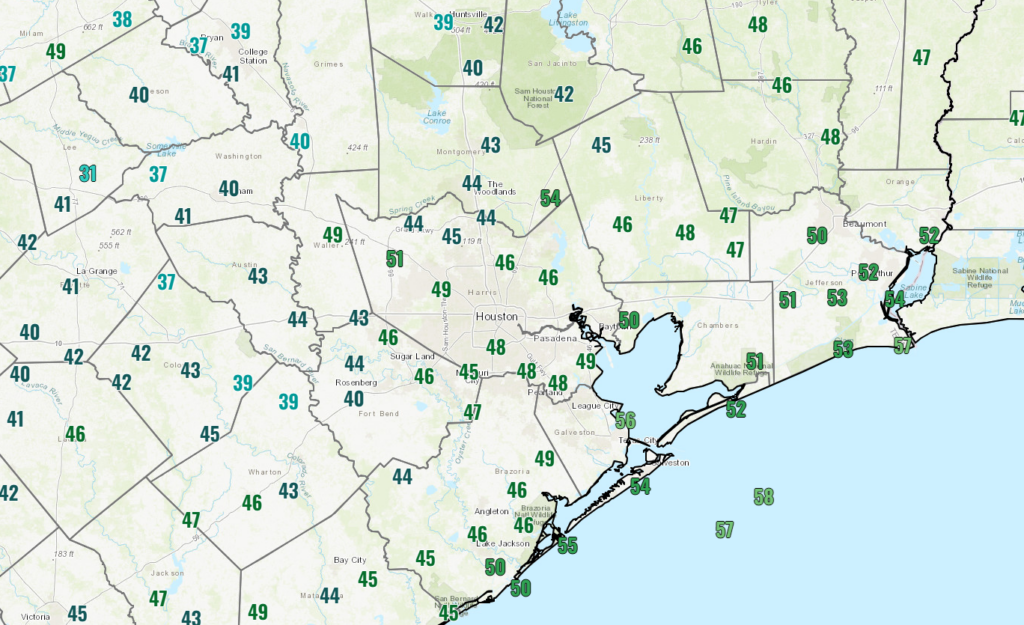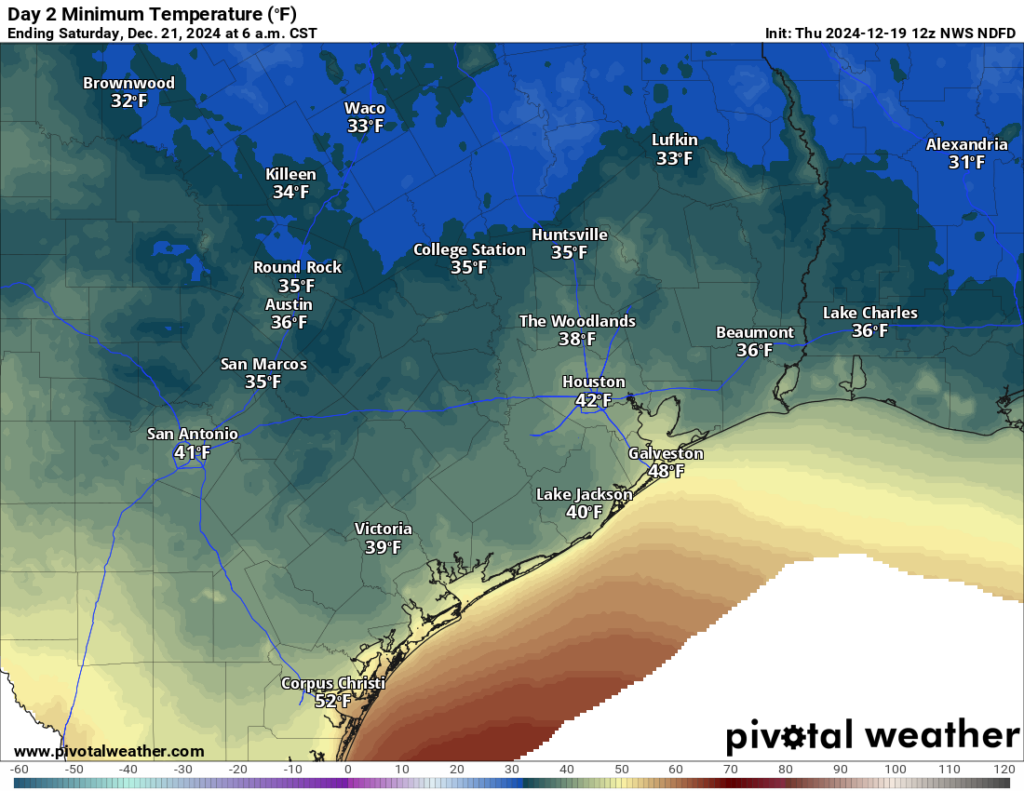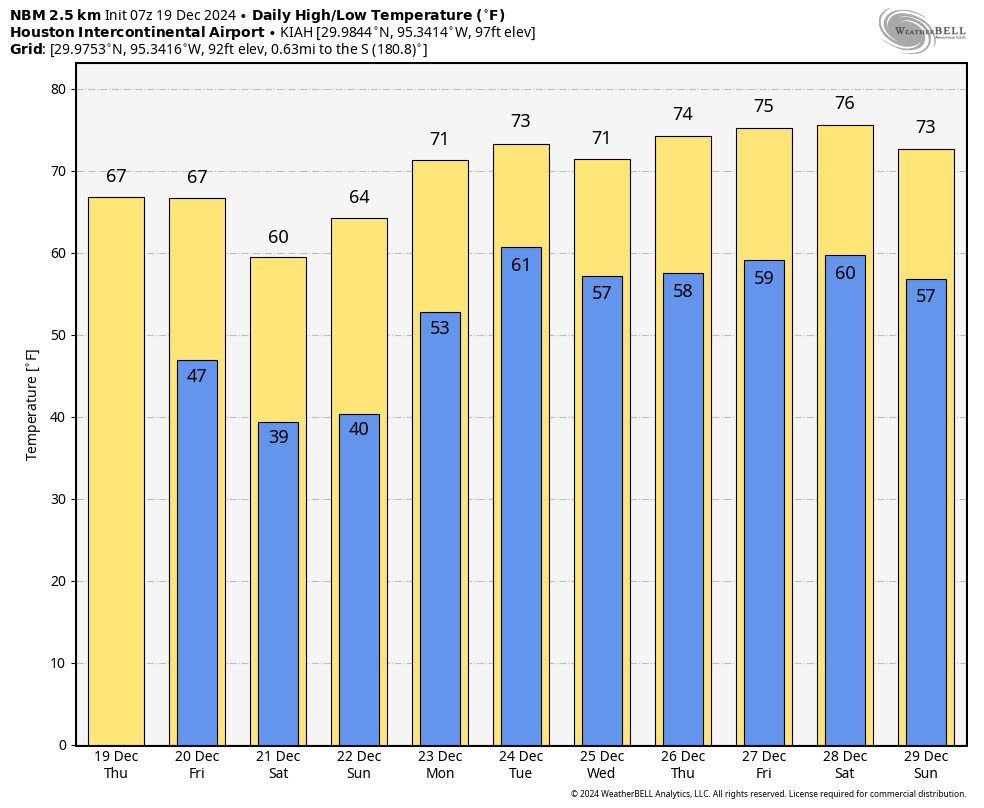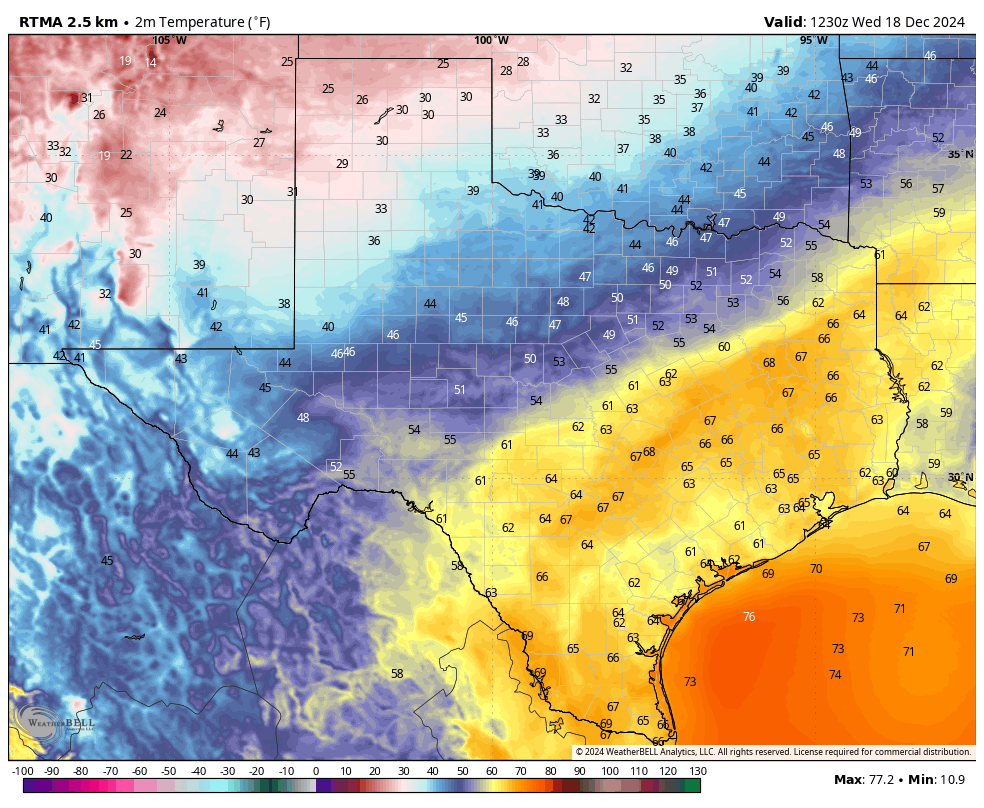In brief: Cool air is settling back into the Houston area this morning, and a secondary push of it arrives Friday night. Look for increasing sunshine today, then plenty of sunshine through Sunday. Clouds and some scattered rain chances do come back next week, including potentially for Christmas Eve and Day. Temperatures will also surge back into the 70s.
Today & Friday
We’re starting off the morning on a cool, crisp note across the Houston area.

There are a couple pockets of low clouds that need to scour out this morning, but the trend today will be toward increasing sunshine with highs into the 60s in most spots.
Tomorrow looks pretty similar overall. Sunshine should dominate the picture, with highs generally in the 60s and lows generally in the 30s to low-40s. A light freeze cannot be entirely ruled out way north of the city, probably up toward Crockett or Madisonville by Saturday morning. But no freezing temps are expected in the city or suburbs as it stands right now.

Saturday and Sunday
A weak secondary push of cold air arrives Friday night to extend the cool weather into the weekend. Our coolest day will probably be Saturday, also conveniently the Winter Solstice (at 3:21 AM for those of you looking to close out a fun Friday night on a celebratory note). Look for highs in the 50s, maybe low-60s south of Houston. Sunday should be a few ticks warmer with highs in the 60s and lows in the 40s. Both days look sun-filled.
Monday
Onshore flows kicks back in next week, and we’ll probably see a few more clouds on Monday in addition to some sun. We’ll ramp high temperatures back up close to 70 in the afternoon with lows in the 40s and 50s.
Christmas Eve
Timing-wise, the next storm system to impact the state is a bit suboptimal, moving in on Christmas Eve. The good news is that we do not expect a ton of rain and storms, but unfortunately there will be at least some rain and storms around on Christmas Eve that could play a role with any events on Tuesday. We move temps up to the low to mid-70s.

Christmas Day and beyond
Well, Christmas Day looks fairly similar to Christmas Eve right now with warm temps and some scattered rain chances. Morning lows should be in the 50s to near 60 on Christmas, with daytime highs ramping up into the mid-70s. We could get a weak cool front on Thursday with a chance of more numerous showers and storms and a slight cooldown for Friday. Then we should warm back up with at least a non-zero chance for an 80 again somewhere in our area next weekend or so. Our next meaningful front is at least showing on the models around New Years Day, but obviously that’s still 12 days out so don’t bank on that just yet.








